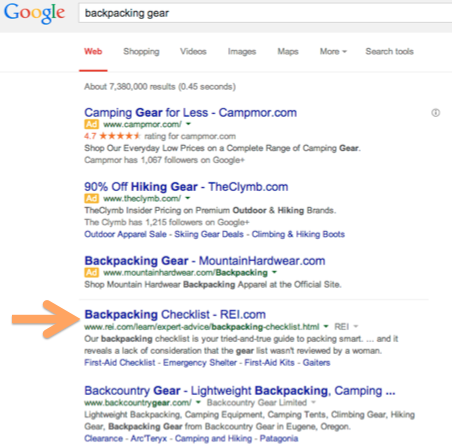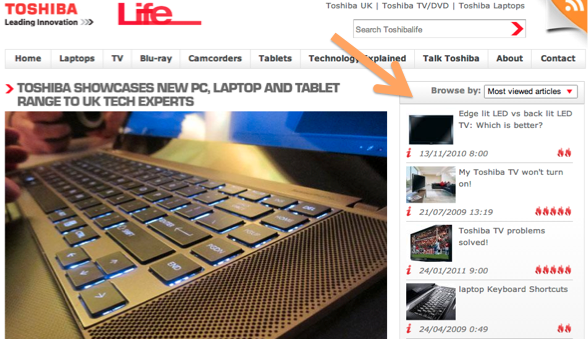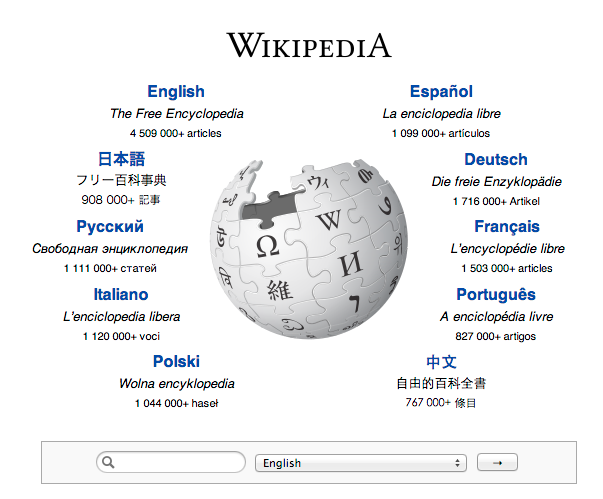Your content needs to be seen by the right people to be successful. One way to do it is to place your message in front of buyers through strategic content distribution, or by sharing assets across social, email, and web channels.
78% of B2B buyers start their research with online search.
Attracting the attention of your buyers by getting new content in front of them is extremely important—but it’s not everything.
78% of B2B buyers start their research with online search, and you want your content to show up when potential customers ask questions relevant to your business. To reach these people, and to earn the opportunity to provide them with the answers they’re looking for, you need a solid SEO and content strategy.
The lifespan of content is a lot longer than a campaign timeline. It continues to bring in leads and generate engagement for months and even years after publication. For example, Mike Volpe, CMO of HubSpot, explains that out of the thousands of leads HubSpot generates from their blog per month, 70% come from posts they didn’t write in the previous month.
But to have this kind of long-term power, content needs to be findable by your prospects and, therefore, by search engines. And the first step to ensuring “findability” is by approaching content through the lens of SEO.
Having an established SEO strategy enables content creators to build a foundation of quality assets that will drive more traffic and authority as time goes on. And this outcome is closely aligned with the goals of a content marketing strategy.
In Moz’s Beginners Guide to SEO, we see that the aspects of what makes a page’s SEO credibility strong also overlap with what makes for good content marketing. According to Moz, there are three signals of quality, search engine optimized content. Let’s get into them below, including examples of brands leveraging these best practices.
Engagement
This is what actions you take after a search engine serves you a result, and how many of those actions you take. Does the user click around on the site, delving deeper into more relevant content, or do they immediately bounce from the page?
Search engines track this kind of engagement, both positive and negative, and use it to inform page rank. For example, do most people click on your content then leave right away? This is a sign that your content isn’t answering the question the user is asking—and, remember, Google’s goal is to give user’s what they’re looking for.
Toshiba wanted to show up when buyers were considering Toshiba products or looking for support. To reach buyers pre- and post-purchase, they started ToshibaLife.com, which is now full of useful, informative content about their products and how to troubleshoot when they’re acting up. This site is centered around answering questions, making it incredibly well-optimized for search engines.
Machine Learning
Associated with the widely felt Panda and Hummingbird algorithm updates, Google is constantly figuring out quantitative and qualitative ways to measure the holistic quality of a site’s content. While the exact terms of what they’re measuring are only known by Google, they’ve made it clear that shortcuts will not serve your website. Instead, quality content should be your focus.
3 Concrete Examples of Content Marketing and SEO Alignment
Hubspot’s Meghan Keaney Anderson believes that search engines will get better at predicting and understanding intent as well as context. “It means that going forward, personalization and optimization should be considered in the same breath.”
Again, the key here is quality content. REI does an incredible job here. When beginners are searching for information on backpacking gear, they don’t necessarily know specific brands or types of gear. REI realized this, and so created a backpacking checklist, with the essential items backpackers need for safely enjoying the great outdoors. This article has proven useful—as it’s page rank shows.

Linking Patterns
When a website is linked to from other reputable websites, it is usually considered an up-vote of quality and popularity—something that Google will usually weigh accordingly. We’ve also seen Google make their linking algorithm approach more sophisticated over the years in response to people “gaming the system” through black hat SEO means.
For example, Wikipedia is widely linked to by diverse sites. This indicates usefulness and popularity to search engines, and thus, Wikipedia is often one of the first resources to pop up when you’re scanning for information.
Moz offers a Do’s and Dont’s list of link-building techniques that take into account what will and will not get you penalized in the current state of Google’s rules. What they boil these rules down to is the idea that “at its best, good link building is indistinguishable from good marketing.”
Sean Work, Director of Marketing at KISSmetrics also believes that integrating SEO and content marketing are closely connected:
As it turns out, when you are diligent about on-page SEO, you end up crafting a website that is logical to both human visitors and search engines. Some of the things involved in establishing good on-page SEO include cutting out duplicate content, simplifying web pages, and making intuitive site architecture.



